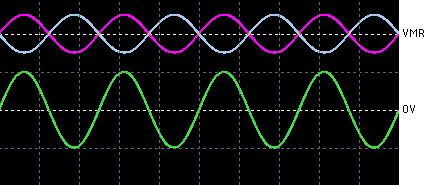This is probably a series of eye roll questions and I’m sorry in advance… still learning the ropes in audio world!
I used to have a wiim pro plus connected to my topping e70 velvet Dac via coslink and then from there to my active desktop speakers (kali l6, v2) using xlr cables. I loved the sound. When I instead used rca to xlr cables directly from the wiim, I didn’t like the sound as much. I couldn’t do a perfect A/B comparison so I fully acknowledge the lack of a full proof test this was… that being said, I could have sworn I heard more openness/lightness with the xlr cables and the external Dac (I know some of you are rolling your eyes already and I don’t disagree haha). Was I just tricking myself here and not actually hearing anything different? My undergrad was in music, so I have a good ear, but I don’t think it’s “that” good…
For my current setup (bmr monitors from philharmonic audio with a Rythmik sub and WiiM amp), I’m very interested in implementing the Wiim ultra with Fosi v3 monoblocks. The wiim doesn’t have xlr out (as has been discussed) but the Fosi has xlr in. Per Amir at ASR, the Fosi looks to have a bit more noise when using rca (many would say it’s proved to be outside of being audible though—I don’t disagree).
sorry for the long prologue, but here are my questions:
1. Per what we know so far from specs, will I hear any difference moving on from the wiim amp to the (a) wiim ultra with Fosi mono amp or (b) wiim amp pro?
2. Will I hear any difference between (a) using rca cables with a wiim ultra with Fosi mono amps and (b) using a WiiM pro plus to topping e70 velvet to Fosi mono amps using xlr?
3. Will the mono blocks really add anything over my WiiM amp or is all of the cross talk inaudible?
I used to have a wiim pro plus connected to my topping e70 velvet Dac via coslink and then from there to my active desktop speakers (kali l6, v2) using xlr cables. I loved the sound. When I instead used rca to xlr cables directly from the wiim, I didn’t like the sound as much. I couldn’t do a perfect A/B comparison so I fully acknowledge the lack of a full proof test this was… that being said, I could have sworn I heard more openness/lightness with the xlr cables and the external Dac (I know some of you are rolling your eyes already and I don’t disagree haha). Was I just tricking myself here and not actually hearing anything different? My undergrad was in music, so I have a good ear, but I don’t think it’s “that” good…
For my current setup (bmr monitors from philharmonic audio with a Rythmik sub and WiiM amp), I’m very interested in implementing the Wiim ultra with Fosi v3 monoblocks. The wiim doesn’t have xlr out (as has been discussed) but the Fosi has xlr in. Per Amir at ASR, the Fosi looks to have a bit more noise when using rca (many would say it’s proved to be outside of being audible though—I don’t disagree).
sorry for the long prologue, but here are my questions:
1. Per what we know so far from specs, will I hear any difference moving on from the wiim amp to the (a) wiim ultra with Fosi mono amp or (b) wiim amp pro?
2. Will I hear any difference between (a) using rca cables with a wiim ultra with Fosi mono amps and (b) using a WiiM pro plus to topping e70 velvet to Fosi mono amps using xlr?
3. Will the mono blocks really add anything over my WiiM amp or is all of the cross talk inaudible?

